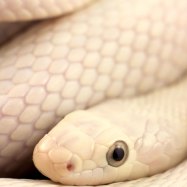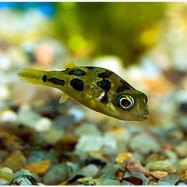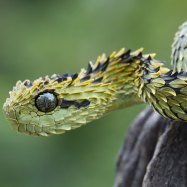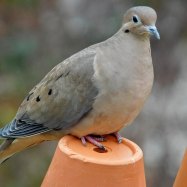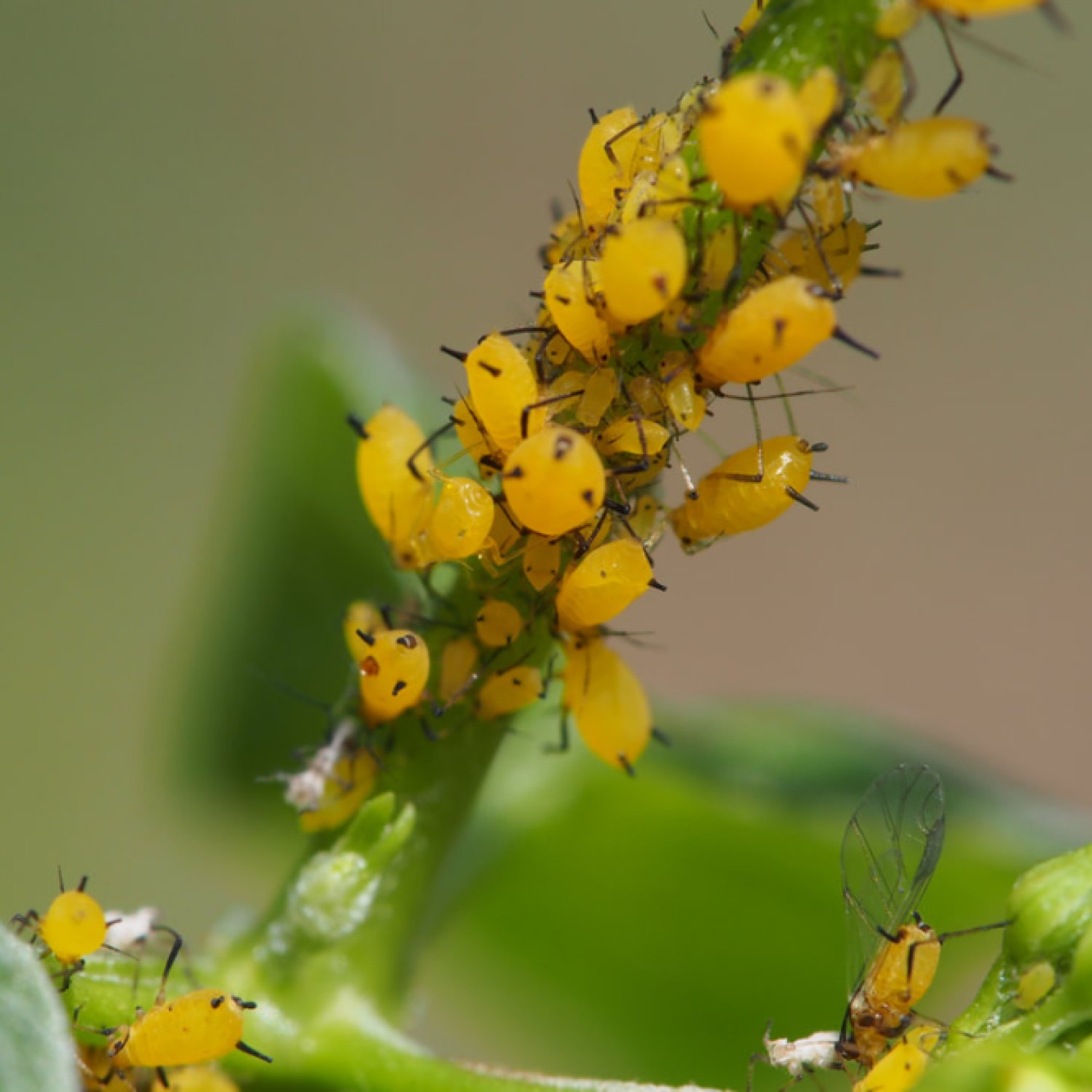
Milkweed Aphids
1.5 - 2 mm
Milkweed aphids, also known as oleander aphids, are small, pear-shaped insects found worldwide. These soft-bodied creatures, measuring 1.5-2 mm, feed on milkweed plants, making them a threat to monarch butterflies who rely on milkweed for survival. Luckily, ladybugs and lacewing larvae are natural predators of these pests and can help control their population. Keep an eye out for these tiny invaders in your garden and take action to protect both the milkweed plants and the beautiful monarch butterflies. #MilkweedAphids #OleanderAphids #NaturalPestControl
Animal Details Summary:
Common Name: Milkweed Aphids
Kingdom: Animalia
Habitat: Fields, gardens, and other outdoor areas
The Fascinating World of Milkweed Aphids
Have you ever walked through a field or garden and noticed tiny, brightly colored insects clustered on a plant? If so, you may have come across one of the most unique and fascinating creatures in the insect world – the Milkweed Aphid.Scientifically known by the name Aphis nerii, the Milkweed Aphid is commonly referred to as such due to its preference for feeding on the sap of milkweed plants. But there is much more to learn about these tiny insects, from their physical characteristics to their role in the ecosystem. So, let's dive into the world of Milkweed Aphids and uncover their amazing features Milkweed Aphids.
Taxonomy and Distribution
Milkweed Aphids belong to the Animalia Kingdom and the Arthropoda Phylum, making them invertebrates with jointed appendages. They fall under the Class Insecta, a classification that includes insects such as bees, butterflies, and flies. Within Insecta, Milkweed Aphids belong to the Order Hemiptera, which includes insects with distinctive piercing and sucking mouthparts. They are part of the larger family Aphididae, commonly known as aphids.One of the most intriguing things about Milkweed Aphids is their widespread distribution. They can be found in fields, gardens, and other outdoor areas around the world. Their geographical range extends to North and Central America, Europe, Africa, and Asia. It is unclear where they originated, but it is safe to say that they have been circulating the globe for quite some time.
Appearance and Physical Characteristics
Milkweed Aphids are small insects, measuring only 1 Mouse Deer.5 - 2 mm in length. Their small size makes them difficult to spot, but their vibrant colors often give them away. Depending on their location, Milkweed Aphids can be green, yellow, or orange, with darker stripes running down their backs.In terms of body shape, Milkweed Aphids are known for their soft, pear-shaped bodies. This unique shape allows them to cling onto their host plant without falling or getting blown away by the wind. They also have a pair of small, black cornicles (projections) on their abdomen, which serve as defense mechanisms against predators.
Habitat and Feeding Habits
Milkweed Aphids can be found in a wide variety of habitats, as long as their host plant, the milkweed, is present. These plants are most commonly found in fields, gardens, and other outdoor areas, but they can also be found in more unconventional places such as urban environments and even on skyscraper roofs!As their name suggests, Milkweed Aphids feed on the sap of milkweed plants using their piercing and sucking mouthparts. This feeding method, known as phloem feeding, involves piercing the plant's tissues and sucking out the sugar-rich sap. While this may seem like a destructive behavior, it is actually beneficial for the milkweed plant. The aphids' saliva contains hormones that stimulate the plant to produce more flowers and nectar, which ultimately attracts pollinators such as bees and butterflies.
Role in the Ecosystem
In addition to their role in the reproduction of milkweed plants, Milkweed Aphids also play a significant role in the ecosystem as a food source for many other animals. Birds, spiders, ladybugs, and other insects are known to prey on aphids. This makes them an essential part of the food chain, ensuring a balanced ecosystem.Another fascinating aspect of Milkweed Aphids is their symbiotic relationship with ants. Ants are known to protect Milkweed Aphids from predators in exchange for the sweet honeydew the aphids produce. This relationship is beneficial for both parties, as the aphids get protection while the ants get a reliable food source.
Threats and Conservation
Like many other insects, Milkweed Aphids face several threats that can impact their population. Pesticides and other chemicals used on plants can kill aphids and harm the overall population. Additionally, habitat destruction and climate change can also have adverse effects on their survival.As a crucial species for the reproduction of milkweed plants and as a food source for other animals, it is essential to conserve Milkweed Aphids and their habitats. One way to support their population is by planting milkweed in gardens and other outdoor spaces. This not only provides a home for Milkweed Aphids but also supports other wildlife such as bees and butterflies.
Fascinating Facts about Milkweed Aphids
To wrap up our exploration of this captivating insect, let's take a look at some fascinating facts about Milkweed Aphids:- The relationship between Milkweed Aphids and ants is so strong that the ants will actually carry the aphids' eggs to safety when their host plant dies or is removed.
- Milkweed Aphids can reproduce both sexually and asexually, meaning they can reproduce without the need for a mate. This allows for rapid population growth.
- Aside from milkweed, Milkweed Aphids will also feed on other plants such as hibiscus, cotton, and tobacco.
- Although they prefer to feed on milkweed, Milkweed Aphids can survive on just about any plant sap, making them adaptable to various environments.
- Their vibrant coloration serves as a warning to potential predators that they contain toxins from their food source, making them unpalatable.
Closing Thoughts
In conclusion, Milkweed Aphids are tiny but fascinating insects that play an essential role in the ecosystem. Their widespread distribution, symbiotic relationships, and unique feeding habits make them an intriguing species to learn about. These insects serve as a reminder of the importance of conservation efforts to maintain a balanced and healthy ecosystem. So, keep an eye out for these colorful creatures on your next outdoor adventure, and remember to support their survival by planting milkweed in your garden.

Milkweed Aphids
Animal Details Milkweed Aphids - Scientific Name: Aphis nerii
- Category: Animals M
- Scientific Name: Aphis nerii
- Common Name: Milkweed Aphids
- Kingdom: Animalia
- Phylum: Arthropoda
- Class: Insecta
- Order: Hemiptera
- Family: Aphididae
- Habitat: Fields, gardens, and other outdoor areas
- Feeding Method: Phloem feeding
- Geographical Distribution: North and Central America, Europe, Africa, and Asia
- Country of Origin: Unknown
- Location: Found globally
- Animal Coloration: Green, yellow, or orange
- Body Shape: Small, soft-bodied, pear-shaped
- Length: 1.5 - 2 mm
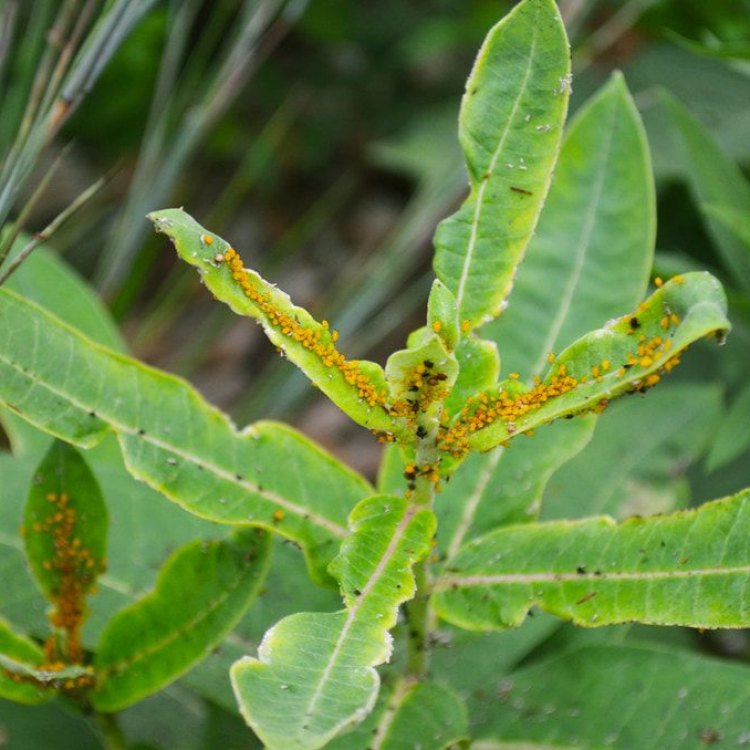
Milkweed Aphids
- Adult Size: 1.5 - 2 mm
- Average Lifespan: 2 - 3 weeks
- Reproduction: Asexual reproduction
- Reproductive Behavior: Egg-laying
- Sound or Call: None
- Migration Pattern: Non-migratory
- Social Groups: Colonies
- Behavior: Forming dense colonies on milkweed plants
- Threats: Predators, parasites, pesticides
- Conservation Status: Not evaluated
- Impact on Ecosystem: Serve as a food source for predators
- Human Use: None
- Distinctive Features: Long antennae, cornicles, and cauda
- Interesting Facts: Milkweed aphids secrete a sweet, sticky substance known as honeydew
- Predator: Ladybugs, lacewings, syrphid flies
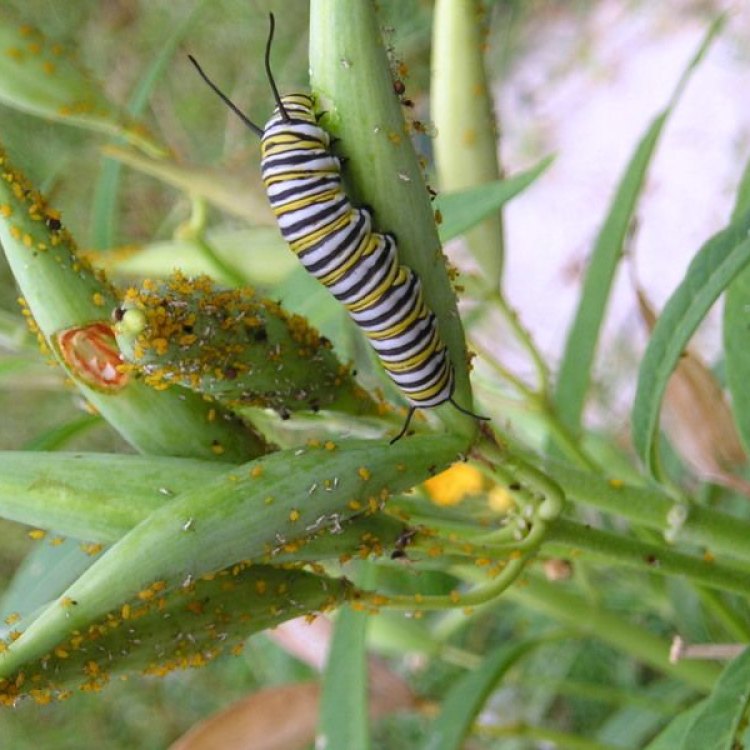
Aphis nerii
Milkweed Aphids: The Tiny Insects with a Big Impact on the Ecosystem
When we think of insects, we often envision creatures buzzing around with wings or crawling on the ground. Rarely do we consider the tiny aphids, measuring only 1.5 to 2 millimeters in size, as significant players in the ecosystem. However, the milkweed aphids, despite their small stature, play a crucial role in maintaining the balance of nature PeaceOfAnimals.Com. These little insects have unique features, behaviors, and interesting facts that make them stand out from other aphid species. Let's dive into the world of milkweed aphids and discover how they impact the ecosystem in ways we never imagined.The Basics: Adult Size and Average Lifespan
Milkweed aphids, also known as Oleander aphids, are a species of aphids that feed exclusively on milkweed plants. They are a small, soft-bodied insect with an average size of 1.5 to 2 millimeters, making them barely visible to the naked eye. Their small size gives them the advantage of hiding and surviving from predators, making them even more intriguing.
On average, milkweed aphids live for only 2 to 3 weeks. This limited lifespan is due to their asexual reproductive behavior, which we will discuss in the next section. Interestingly, the lifespan of milkweed aphids is heavily dependent on their environment and the availability of resources Maine Coon. This means that if they have a steady food source and are free from threats, they can live longer than the average lifespan.
Asexual Reproduction and Egg-Laying Behavior
Milkweed aphids reproduce asexually, meaning they do not need a mate to reproduce. This unique reproductive behavior allows them to quickly increase their population, making them a formidable force in colonies. They can produce up to 12 generations per year, with each generation consisting of around 60 offspring. This rapid reproductive cycle makes milkweed aphids efficient and effective colonizers.
Their egg-laying behavior is also quite fascinating. Unlike other insects that lay eggs on various surfaces, milkweed aphids lay eggs inside the plant's tissues. This is known as endophytic oviposition, a term that describes the depositing of eggs within the plant's tissues. This behavior not only protects the eggs from predators but also provides a source of food for the emerging nymphs as they feed on the plant tissue.
No Sound or Call, but Social and Non-Migratory
While some insects use sound or calls for communication or defense, milkweed aphids do not possess this ability. They do not produce any sound or call as a means of communication, unlike other aphid species. However, they do exhibit social behavior by forming colonies. These colonies consist of female aphids and their offspring, forming dense populations on milkweed plants.
Milkweed aphids are non-migratory, meaning they do not move from one location to another. They stay on their host plant until it is no longer a suitable food source. This behavior allows them to establish colonies and thrive in their environment.
Distinctive Features: Long Antennae, Cornicles, and Cauda
Despite their small size, milkweed aphids have distinctive features that set them apart from other insects. They have long antennae that are approximately half the length of their body, making them look larger than they actually are. These antennae are sensitive to touch and help milkweed aphids detect changes in their environment.
Another distinguishing feature of milkweed aphids is their cornicles. These small, tube-like structures are located on the abdomen, and they secrete defensive substances to ward off predators. When threatened, milkweed aphids can release a sticky, white substance known as "aphid milk," which can deter predators.
Lastly, milkweed aphids have a cauda, a tail-like structure at the end of their abdomen. This structure helps them balance and hold onto the milkweed plant while feeding.
Interesting Facts: Sweet, Sticky Secretion and Predators
Milkweed aphids have an interesting adaptation that sets them apart from other aphid species. They secrete a sweet, sticky substance called honeydew that serves as a food source for other insects, such as ants. This secretion is a result of the sap-feeding process of milkweed aphids and is also used as a defense mechanism against predators. When honeydew dries up, it leaves behind a white, powdery substance on the leaves, commonly known as "aphid dust."
Despite their ability to secrete honeydew, milkweed aphids still have predators in the wild. Ladybugs, lacewings, and syrphid flies are among the common predators of milkweed aphids. These insects are crucial in keeping the milkweed aphid population in check and maintaining the balance of the ecosystem.
Conservation Status and Impact on Ecosystem
Milkweed aphids are not evaluated in terms of conservation status by the IUCN Red List, as they are not considered at risk of extinction. However, their role in the ecosystem is crucial in maintaining the balance of nature. They serve as a food source for predators, like ladybugs, lacewings, and syrphid flies, which in turn, control the milkweed aphid population.
Moreover, milkweed aphids play an important role in the life cycle of milkweed plants. These insects help in pollination by transferring the pollen from one flower to another as they feed on the sap. Their feeding also stimulates the growth of milkweed plants, making it more attractive to pollinators, such as bees and butterflies.
No Human Use, But Important for the Ecosystem
Unlike other insects that have been utilized for human purposes, milkweed aphids have no known use for humans. They are not considered pests as they only feed on milkweed plants, and their population is easily managed by natural predators. However, they are essential for the ecosystem as they contribute to the pollination and growth of milkweed plants, which serve as a vital food source for other insects, birds, and animals.
In addition, milkweed aphids can also serve as an indicator species for ecological research. As they are highly specific to milkweed plants, their presence (or absence) can indicate the health of the milkweed population and the surrounding ecosystem.
In a Nutshell
Milkweed aphids may seem like insignificant insects due to their small size, but they play a significant role in maintaining the balance of the ecosystem. Their unique features, behaviors, and interesting facts make them stand out from other insects and pique our curiosity. From their asexual reproduction and egg-laying behavior to their defensive secretion and impact on the ecosystem, milkweed aphids prove that size does not always define significance in the world of insects.
So, the next time you spot a tiny, green aphid on your milkweed plant, remember that it is not just a mere pest, but a crucial player in the intricate web of life. These little insects may go unnoticed by many, but their impact on the ecosystem is immeasurable. Let's appreciate and protect all creatures, big and small, as they each have a role to play in maintaining the balance of nature.

The Fascinating World of Milkweed Aphids
Disclaimer: The content provided is for informational purposes only. We cannot guarantee the accuracy of the information on this page 100%. All information provided here may change without prior notice.



